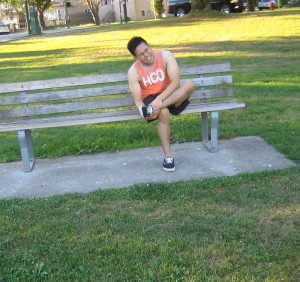Heel spurs is a sore condition that develops due to the inflammation of the plantar fascia in the base of the foot. The inflammation results to the formation of a bony protrusion from the heel bone.
The spur causes the foot and the heel to become swollen and sore. The pain is intense upon waking up in the morning and subsides as the day progresses. Various measures can be used to manage heel spurs.
Adequate rest for the heel

Allowing the affected heel to rest is a vital component in managing heel spurs. The individual should take a break from long walks, running or other activities where the heel is pounded against hard surfaces. This helps in lessening the pain of the heel spurs.
Application of an ice pack for heel spurs
An ice pack can be used to reduce the pain caused by the heel spurs. Make sure that the pack is wrapped with a clean towel or cloth before it is applied on the site of the spur. The cool temperature of the pack works by reducing the pain and swelling in the site.
Heel inserts
Place a heel pad insert into the shoe as instructed by the doctor to help relieve the discomfort of heel spurs. The individual should consult the doctor first regarding the length on using one based on his/her condition.
Stretching
The individual with heel spurs might be instructed to perform stretching to reduce the pain from the heel spur. It is vital to regularly perform the suggested stretching regimen to keep the heel loose.
Apple cider vinegar
Apple cider vinegar can be used to lessen the pain caused by heel spurs. It works by drawing out excess calcium from the site of the spur.
You can apply it by immersing cotton balls in vinegar and dabbing it on the heel region or cutting a piece of cloth or towel in the shape of the foot and submerged in the vinegar. The cloth or towel is placed in the shoes and worn for up to 5 days.
Turmeric powder
Turmeric powder is a natural remedy for pain and inflammation. A doctor should be consulted first if the individual decides to use turmeric in treating heel spurs.
